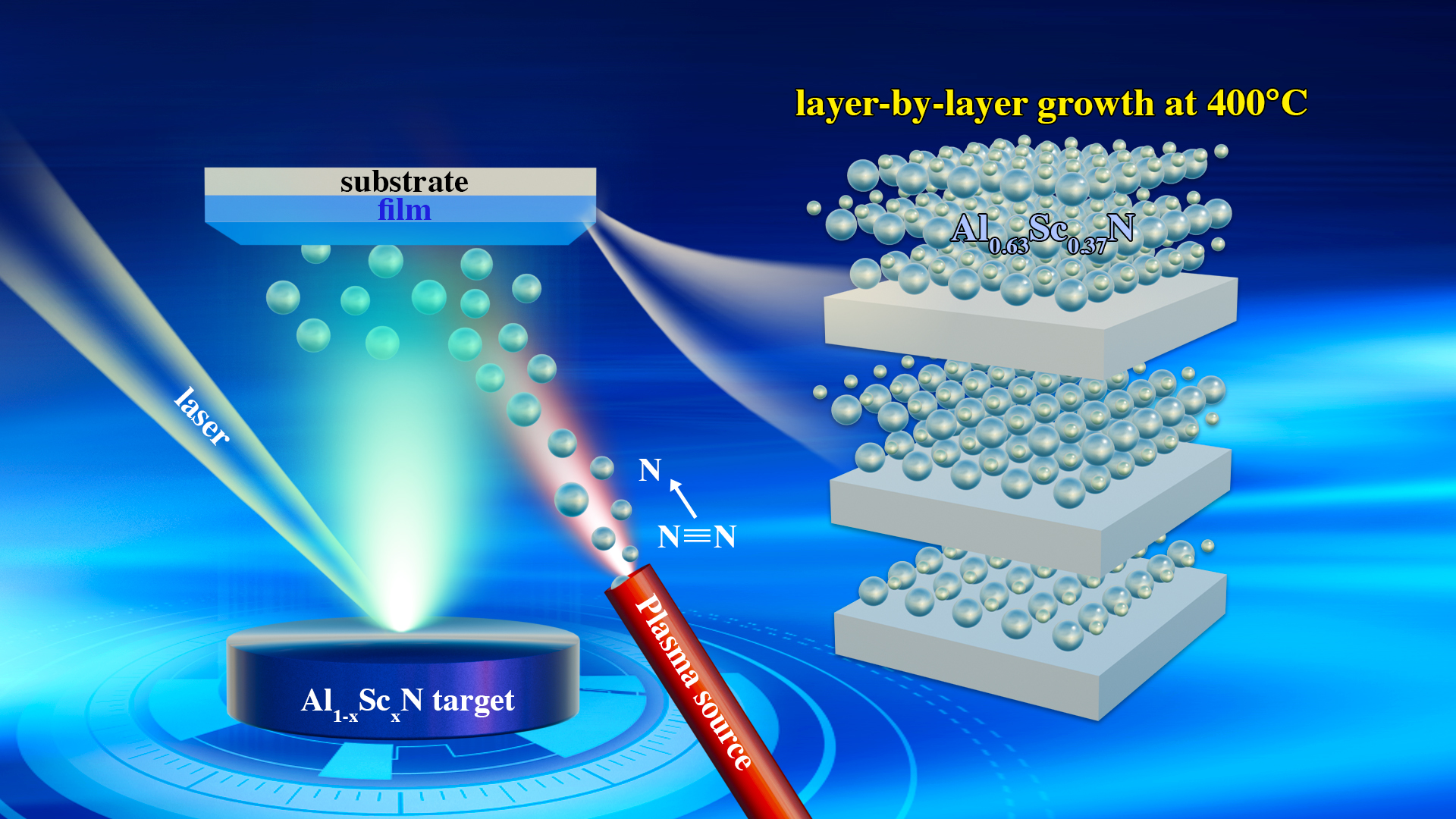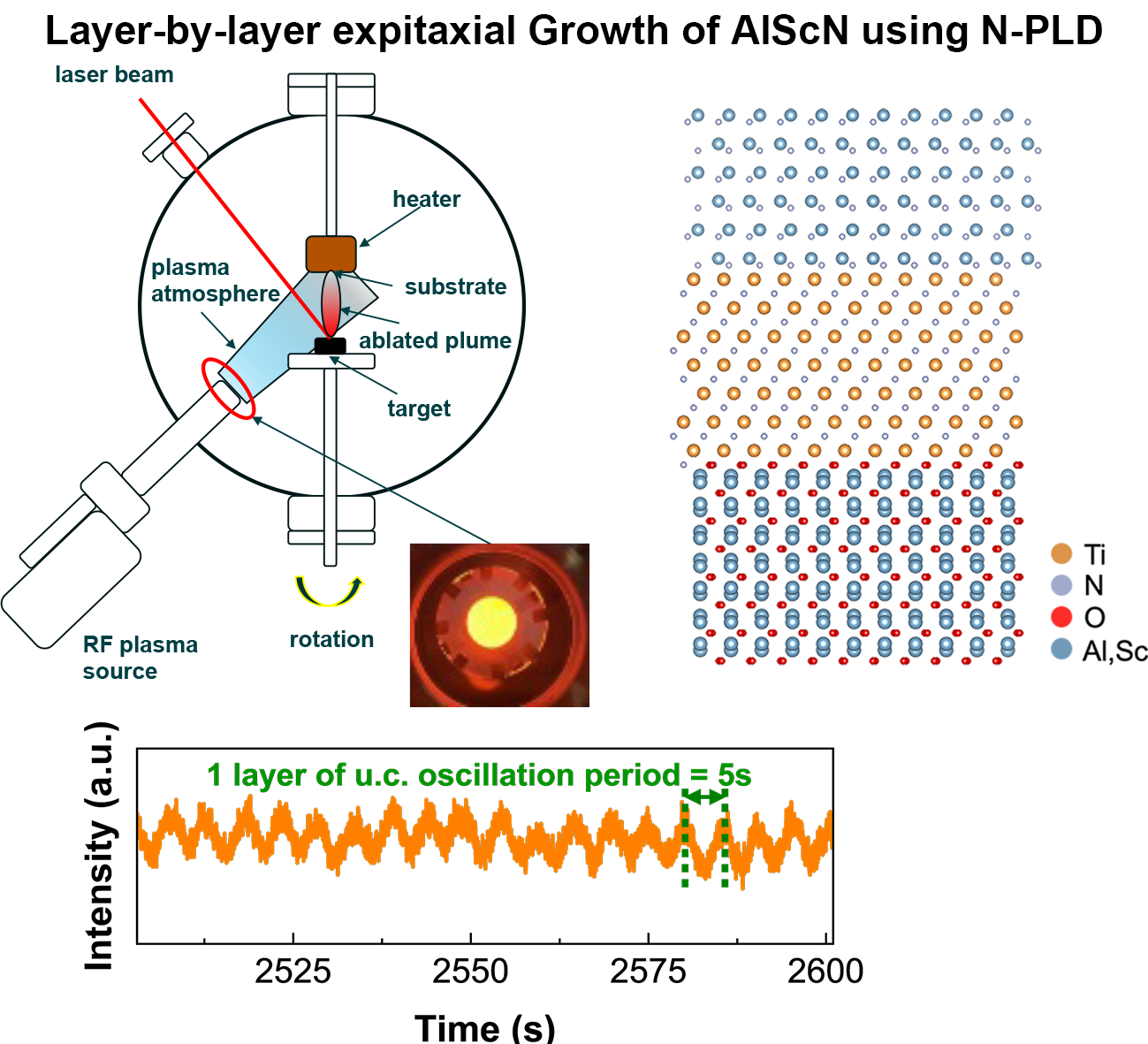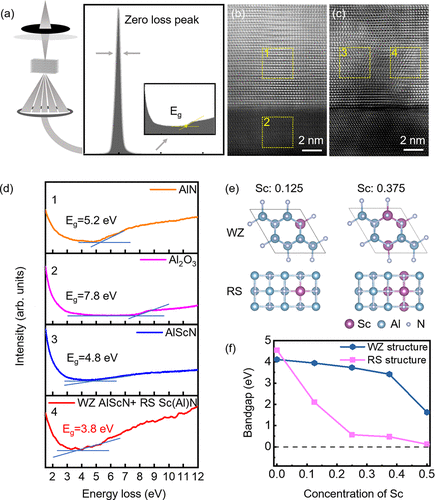Scandium-doped aluminum nitride ((Al,Sc)N) is a promising material for next-generation nonvolatile memory and MEMS applications due to its high remanent polarization, low dielectric constant, high Curie temperature, and preeminent thermal stability. Its compatibility with CMOS processes is particularly critical, enabling back-end-of-line (BEOL) integration and opening new pathways for low-power computing, data storage, and microsystems.
However, the material’s practical applications remain hindered by its high coercive field and severe leakage current. Acquiring high Sc-doped (Al,Sc)N thin films with uncompromised crystal quality, preferably at low temperature for BEOL compatibility, remains a challenge to fulfill their potential piezoelectric, ferroelectric, and electro-optical applications.

A research team led by Associate Professor Changjian Li from the Department of Materials Science and Engineering at the Southern University of Science and Technology (SUSTech) has made a series of breakthroughs in the study of wurtzite nitride ferroelectric thin films. Their two related papers have been published in Nano Letters, a high-impact journal in materials and nanotechnology.
The researchers previously achieved epitaxial growth of single-crystal AlScN films with Sc compositions ranging from 0 to 0.3 using traditional pulsed laser deposition (PLD), with results published in Small Methods.
Now, they have achieved a significant breakthrough in the low-temperature epitaxial growth of highly Sc-doped AlScN ferroelectric films. Through collaborative innovation, they integrated radio-frequency nitrogen plasma with PLD technology (N-PLD, Figure 1), converting inert nitrogen molecules into active nitrogen atoms during film growth. This approach suppresses nitrogen vacancy formation and enhances epitaxial film quality.

Figure 1. Schematic illustration of N-PLD
Using this technique, the team achieved layer-by-layer epitaxial growth of (Al,Sc)N ferroelectric films at 400 °C (Figures 2a-b). Comparative analysis with traditionally PLD-grown (Al,Sc)N films revealed the critical role of atomic nitrogen sources in stabilizing the wurtzite phase at high Sc concentrations (Figure 2c).
In N-PLD-grown films, Sc-O bond signals were eliminated (Figures 2d-e), and element distribution was uniform, with no Sc segregation or oxygen contamination (Figures 2f-j). PFM measurements showed 180° phase reversal (Figure 2k), while P-E testing indicated a remanent polarization of 160 μC cm-2 and a coercive field reduced to 2.9 MV cm-1 (Figure 2l).

Figure 2. Structural and compositional properties, and device performance of the layer-by-layer epitaxial Al0.63Sc0.37N films
This work marks the first successful epitaxial growth of AlScN with 37% Sc content at 400°C, approaching the phase boundary while maintaining a pure wurtzite phase and reducing the coercive field to the sub-3 MV cm-1 range.
The related paper, titled “Low-Temperature Layer-by-Layer Epitaxy of Ferroelectric Al0.63Sc0.37N Thin Films for Back-End-of-Line Integration,” has been published in Nano Letters.
The first authors of this study are Ph.D. students Chao Li and Dirui Wu from the Department of Materials Science and Engineering at SUSTech. Professor Jiangyu Li and Associate Professor Changjian Li are the corresponding authors.
Scandium distribution uniformity identified as a key to reducing leakage current
The team also discovered that growth temperature plays a key role in regulating leakage current in AlScN ferroelectric films. In high-temperature-grown AlScN samples, even with a Sc content of only 0.1, localized Sc segregation into the rock-salt phase occurs. Low-loss EELS analysis (Figure 3a) revealed that rock-salt phase nanoparticles reduce the bandgap (Figures 3b-f), potentially forming leakage pathways.

Figure 3. STEM analysis of influence of rock-salt nanoparticles on bandgaps
The related paper, titled “Atomic Origins of Leakage Paths in Epitaxial Al1–xScxN Thin Films,” has been published in Nano Letters.
The first authors of this work are Dirui Wu and Chao Li, with Associate Professors Changjian Li and Research Assistant Professor Yabei Wu as the corresponding authors. Professor Wenqing Zhang provided theoretical guidance on the leakage mechanisms in AlScN.
Paper links (In order of appearance above):
Nano Letters: https://pubs.acs.org/doi/pdf/10.1021/acs.nanolett.5c04014
Nano Letters: https://pubs.acs.org/doi/10.1021/acs.nanolett.5c03675
Related link: Small Methods (2024) — https://doi.org/10.1002/smtd.202400722
To read all stories about SUSTech science, subscribe to the monthly SUSTech Newsletter.
Proofread ByAdrian Cremin, Yuwen ZENG
Photo ByDepartment of Materials Science and Engineering